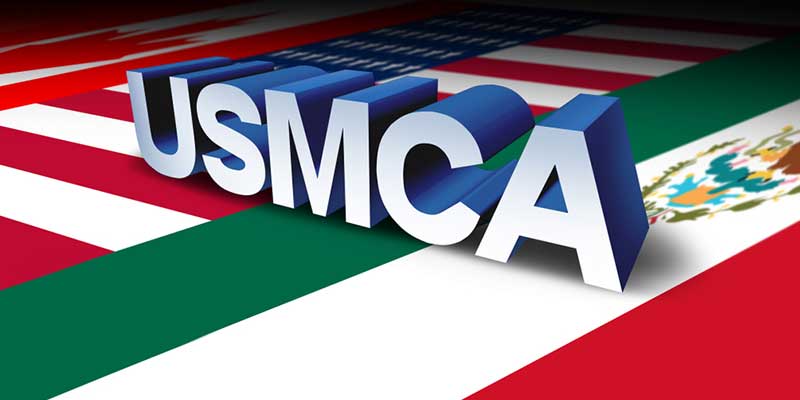
On 24 April 2020, the Trump Administration notified Congress that the United States Mexico Canada (USMCA) Agreement will take effect on 1 July 2020. We give a summary of its key provisions and what its potential effects might be.
A. History – NAFTA And The USMCA
The USMCA stands for United States-Mexico-Canada Agreement. It is the replacement for the North Atlantic Free Trade Agreement, the trilateral trade agreement that was signed in 1992 by the United States, Mexico, and Canada. The NAFTA agreement eliminated tariffs on most products traded between the three countries and liberalised trade in agriculture, textiles, and automobile manufacturing. This integrated the three economies closer together and led to Mexico becoming a 'nearshoring ' destination for many US and Canadian companies. The agreement also focused on protecting intellectual property, establishing dispute resolution mechanisms, and implementing labour and environmental safeguards.
-
You can rely on SIXM for procurement services in Mexico
In 2017, President Trump demanded that the NAFTA agreement should be re-negotiated as part of his plan to bring more jobs back to the US. He was particularly critical of Mexico 's low labour costs which he saw as giving an unfair trading advantage to Mexico. After he threatened to withdraw the US from the agreement, Mexico and Canada agreed to renegotiate the agreement. In November 2018, the three countries signed the final draft of the 2,325-page USMCA agreement which was to take effect in 2020.
The last 2 years were extremely turbulent, with Canada and the US placing retaliatory tariffs on one another in 2018, and the USA threatening in 2019 to raise tariffs against Mexico should they fail to stem the inflow of Central American migrants trying to enter the US through Mexico. However on 10 December 2019, the three nations agreed to add amendments and on 16 January 2020, the US Senate approved the final USMCA.
B. What Does The USMCA Do?
The USMCA 's provisions address these key areas:
-
Intellectual property protection and digital trade
-
Financial services and currency regulation
-
Labour rights
-
Environment protection
-
Manufactured goods
-
Agriculture products
- Outsource your Mexico product sourcing project and get it quickly done and delivered remotely online
Pros And Cons Of USMCA
The USMCA Agreement, also known as the United States-Mexico-Canada Agreement, has both pros and cons. Let's explore them:
Pros
- The agreement updates and modernizes trade rules, reflecting the current economic landscape.
- It provides improved market access for various industries, facilitating trade among the three countries.
- USMCA strengthens intellectual property rights resulting in innovation and creativity protection
- The agreement includes provisions to enhance labor and environmental protections, promoting fair sustainability.
Cons
- Certain industries may face job displacement due to changes in trade policies and competition
- USMCA extends patent protections for biologic drugs, potentially leading to higher medication costs
- Some argue that the dispute resolution mechanism in the agreement may limit national sovereignty.
- There are concerns regarding increased access to the Canadian dairy market, impacting domestic producers.
Overall, the USMCA Agreement brings benefits such as modernization, market access, and stronger intellectual property protection, but it also presents challenges related to job displacement and potential increased costs in certain sectors
Take your operations to the next level with the expertise of our Mexico manufacturing consultants. Contact us today
Potiential Effects Of UMSCA - Key Facts
We summarize the changes that are likely to affect importers the most.
De Minimis Threshold
-
The UMSCA increases the tax-free threshold for Mexico and Canada. Mexico will provide USD 50 tax-free de minimis while Canada will raise their de minimis level from C$20 to C$40. Mexico will also allow duty-free shipments up to the value of USD$117. The US threshold remains at USD 800. As most small to medium size businesses have shipments exceeding these de minimis thresholds, it is unlikely that the new changes are going to significantly change the existing customs procedures and taxes they face.
Automotive Rules Of Origin And Regional Value Content
-
To qualify for zero tariffs, the total North American content of a vehicle must be 75% (up from 62.5% under the NAFTA agreement). 70% of all the steel, aluminium and glass used in the production of the automobile must originate in North America.
-
A proportion of the vehicle must be produced using an average labour wage of USD 16/hour (this will require Mexico to ensure that a minimum wage of USD$16/hour is instituted).
Certification Of Origin
-
Importers will not be required to complete a formal certification document and can instead use informal documentation e.g. commercial invoices. These can be completed by the importer, exporter or producer.
Intellectual Property
-
The general provisions go towards strengthening copyright and patent protections for US creators and innovators. They also aim to curtail digital piracy and illegal copying of digital content.
The rest of the USMCA provisions concern enhancing environmental protections, increasing the US ' access to Canada 's dairy markets, and requiring Mexico to make it easier for workers to form unions.
-
Read More About Simple and Vital Ways of Avoiding Manufacturing Problems

